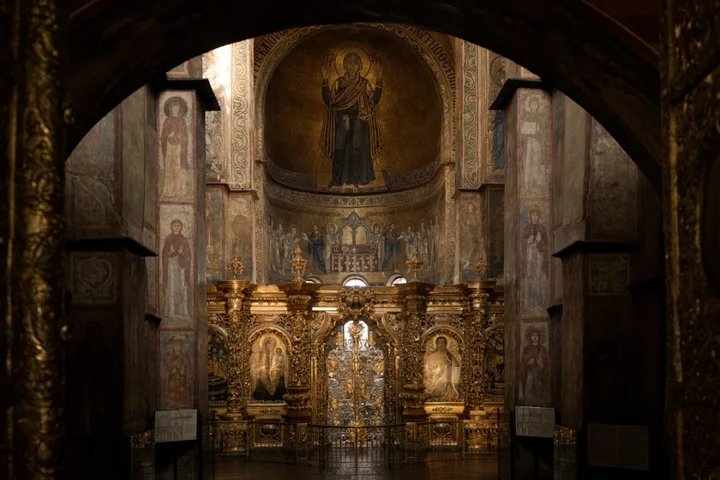
Unesco adds two locations in war-ravaged Ukraine on its list of historic sites in danger
The UN's World Heritage Committee has placed two major historical sites in Ukraine on its list of such sites that it considers to be in danger. The iconic Saint Sophia Cathedral in the capital, Kyiv, and the medieval center of the western city of Lviv, are UNESCO World Heritage Sites central to Ukraine's culture and history. The decision announced on Friday to put those two on the body's list of sites “in danger” has no enforcement mechanism, but could help deter Russian attacks. Neither site has been directly targeted since Russia invaded Ukraine in February 2022, and Lviv has largely been spared from the fighting. But Russia has unleashed waves of strikes on Kyiv and other cities, hitting residential areas and critical infrastructure with Iranian-made attack drones. The decision was taken at the 45th session of the World Heritage Committee, which is being held in Saudi Arabia. The committee maintains UNESCO's World Heritage List and oversees conservation of the sites. The gold-domed Saint Sophia Cathedral, located in the heart of Kyiv, was built in the 11th century and designed to rival the Hagia Sophia in Istanbul. The monument to Byzantine art contains the biggest collection of mosaics and frescoes from that period, and is surrounded by monastic buildings dating back to the 17th century. The Kyiv-Pechersk Lavra, also known as the Monastery of the Caves, is a sprawling complex of monasteries and churches — some underground — that were built from the 11th to the 19th century. Some of the churches are connected by a labyrinthine complex of caves spanning more than 600 meters (2,000 feet). The two sites on the Dnipro River, a 15-minute drive from one another, are “a masterpiece of human creative genius," according to Unesco, the UN Educational, Scientific and Cultural Organization. The other site is the historic center of Lviv, near the Polish border. A 5th-century castle overlooks streets and squares built between the 13th and 17th centuries. The site includes a synagogue as well as Orthodox, Armenian and Catholic religious buildings, reflecting the city's diversity. “In its urban fabric and its architecture, Lviv is an outstanding example of the fusion of the architectural and artistic traditions of Eastern Europe with those of Italy and Germany,” Unesco said. “The political and commercial role of Lviv attracted to it a number of ethnic groups with different cultural and religious traditions.” Lviv is more than 500km from Kyiv and even further from any front lines, but it has not been spared. Russian cruise missiles slammed into an apartment block in the city in July, killing at least six people and wounding dozens. Unesco added Ukraine's Black Sea port city of Odesa to its list of endangered heritage sites in January. Russian forces have launched multiple artillery attacks and airstrikes on the city, a cultural hub known for its 19th-century architecture. Russia says it only strikes military targets. Under the 1972 Unesco convention, ratified by both Ukraine and Russia, signatories undertake to “assist in the protection of the listed sites” and are “obliged to refrain from taking any deliberate measures” that might damage World Heritage sites. Inclusion on the List of World Heritage in Danger is meant to rally urgent international support for conservation efforts. The list includes more than 50 sites around the world. Read More Ukraine-Russia war – live: ‘Significant losses’ for Putin’s forces as Kyiv retakes village and attacks ships Ukraine recaptures another village from Putin’s forces – as it keeps up attacks on Russia’s ships Putin meets the leader of Belarus, who suggests joining Russia's move to boost ties with North Korea Ukraine war’s heaviest fight rages in east - follow live Charity boss speaks out over ‘traumatic’ encounter with royal aide
2023-09-16 14:58
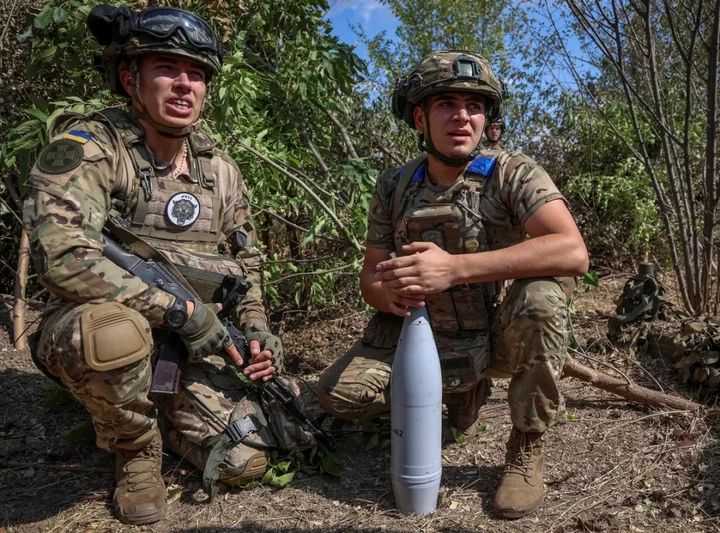
Ukraine-Russia war – live: ‘Significant losses’ for Putin’s forces as Kyiv retakes village and attacks ships
Ukraine has claimed fresh success in its counteroffensive against Vladimir Putin’s forces, with the recapture of another village – a liberation that the army says is “key to success in all further directions”. The announcement by the General Staff of Ukraine’s armed forces said that Russian forces had faced “significant losses” in the battle. Kyiv’s forces are seeking to reclaim land occupied by Moscow across multiple areas of southern and eastern Ukraine. The village of Andriivka is about 10 kilometres south of the Donetsk town of Bakhmut, which Russia captured in May after some of the bloodiest fighting of the war. Meanwhile, Britain’s most senior military officer said Ukraine had taken the initiative over Russia with its offensive, even if gains are gradual. Sir Tony Radakin said: “In the north they are holding and fixing Russian forces there and in the south they are making progress between 10 and 20km.” His comments came as Ukraine president Volodymyr Zelensky hailed Ukraine’s destruction of a Russian air defence system in the annexed Crimea peninsula. Read More Kim Jong Un stops to see a fighter jet factory as Russia and North Korea are warned off arms deals She danced with Putin at her wedding. Now the former Austrian foreign minister has moved to Russia What is a Storm Shadow cruise missile?
2023-09-16 14:16
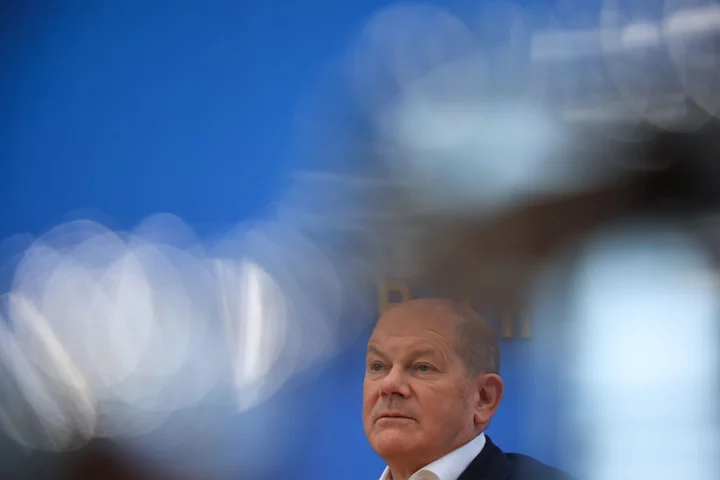
Scholz’s Dream of Climate Revolution to Revive Germany Is Dying
Chancellor Olaf Scholz is struggling to pull off his plan to harness the transition to green energy and
2023-09-16 13:55
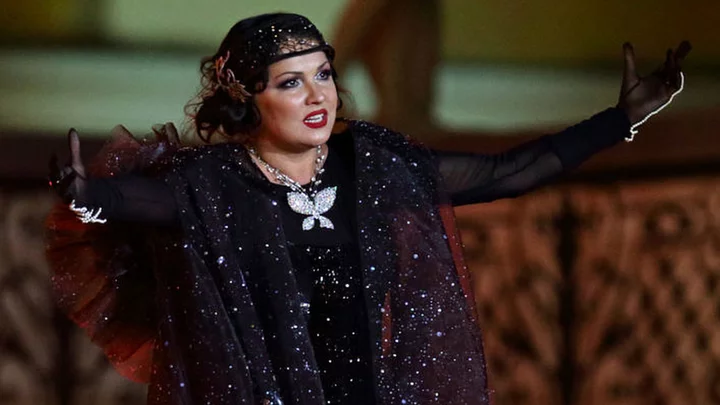
Berlin protesters condemn Russian soprano Netrebko's opera performance
Anna Netrebko has been accused of failing to denounce Vladimir Putin for Russia's war in Ukraine.
2023-09-16 02:46
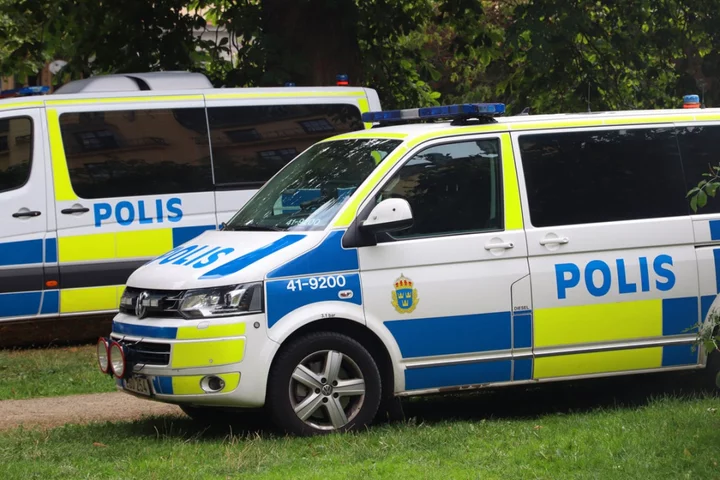
Teenager is latest victim of spate of deadly shootings across Sweden
A teenager has died after being shot in the southern suburbs of Stockholm – one of a spate of shootings in the country across the last week. Police received were called after loud bangs were heard in Vastertorp at around 8pm local time on Thursday, with the injured boy – whose age was not given – taken to hospital before dying of his wounds overnight. The other shootings include four in the university city of Uppsala – two of them fatal – and two others in Stockholm, where a 13-year-old teenager lost his life. Stockholm police said they were still seeking a suspect. “I don't have a clear answer as to whether this is connected to other murders recently, but it is something we are investigating,” said spokesman Towe Hagg. Sweden has faced an increase in recent years which police and authorities blame on criminal gangs fighting over arms and drug trafficking, using guns and explosive devices.. Earlier this week, the national police chief, Anders Thornberg told a press conference, that this wave of violence had reached an "unprecedented" level. “There have recently been after on an unprecedented scale,” Mr Thornberg said. “Several boys aged between 13 and 15 have been killed, the mother of a criminal was executed at home, and a young man in Uppsala was shot dead on his way to work,” he added. “Citizens are afraid, insecurity is increasing. And this at a time when we have raised our terrorist alert level in the country,” Mr Thornberg said. A number of crimes by gangs had been foiled in recent days, the police chief added, saying that such preventative work was key. “Several people have been arrested and weapons confiscated in Uppsala alone, where the situation is very serious,” Ulf Johansson, a police officer in the region, about 40 miles (65km) north of Stockholm. Up until the end of August this year – so not including the recent spate of incidents – there were 247 shootings across Sweden, according to national statistics. Those led to 30 deaths. Seventy-six of those incidents occurred around the region of Stockholm. In 2022, 62 people were killed in 391 shootings across the country, with 128 of those incidents around the Stockholm region. When announcing those statistics in December, the justice minister, Gunnar Strommer, called it a modern-day record. "Deadly gun violence has increased and unfortunately has hit a new, bloody record this year," he said. Mr Strommer said at the time that those 62 deaths compared to four in Norway, four in Denmark and two in Finland. In 2021, 45 people were shot dead in Sweden. In 2012, the total was 17 Also last year, there were 90 explosions and 101 attempted explosive attacks were recorded, according to the data. So far this year, more than 100 explosions have already been recorded. Sweden has gone from having one of the lowest incidences of gang violence to one of the highest over the last 20 years, according to the Swedish National Council for Crime Prevention, with the current government vowing to crackdown on gang crime. Read More Nobel Foundation raises the amount for this year’s Nobel Prize awards to 11 million kronor Things to know about Sweden's monarchy as King Carl XVI celebrates 50 years on the throne Sweden's figurehead king celebrates 50 years on the throne On the brink of joining NATO, Sweden seeks to boost its defense spending by 28% Sweden brings more books and handwriting practice back to its tech-heavy schools Trial starts in Sweden of 2 oil executives accused of complicity in war crimes in Sudan
2023-09-15 22:51
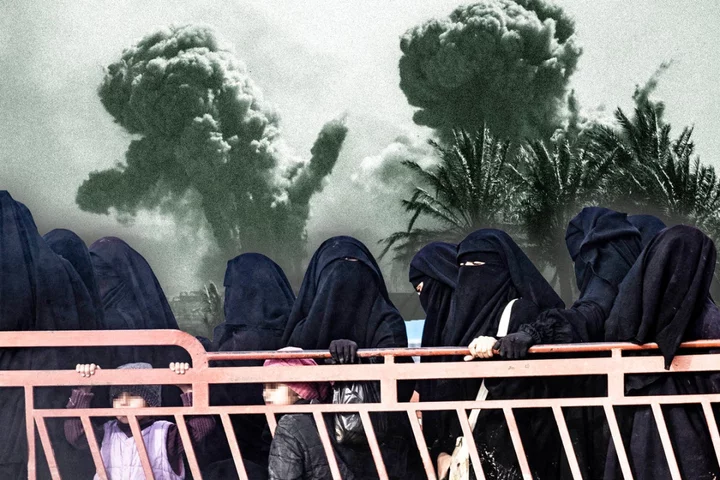
She was forced to live under Isis in Syria as a child and then stuck in a refugee camp. Finally she is home
In a courtyard in the shadow of Tirana’s largest mosque sits Emina. A gloved hand reaches out for a can of Pepsi, which she sips as she watches the city around her. Although she was born in Tirana, it is unfamiliar: her formative years, and most of her memories, were shaped in Baghuz and Raqqa, in Syria. Both cities were held for years by the jihadist group Isis, known locally as Daesh. Emina has been back in Tirana for just a month. She is still only 16. A quiet and withdrawn figure; her soft voice is barely audible. Life in Albania is a new and difficult adjustment, but she is certain that leaving Syria was the right decision. "Life is much better here, so much better than where I was”. Emina is accompanied by her grandmother and cousin. All three are wary of having their photographs taken, given what they have been through. They are a religious family: both wear the hijab, rather than a burqa like Emina. Her grandmother, a woman in her 70s, lived under the communist regime of Albanian former leader Enver Hoxha, when religion was banned by the state. Both forms of dress are still uncommon in Albania. The bright pastels of their hijabs contrast with Emina’s black burqa, a mark of the practice of two very different forms of Islam. Emina was taken to Syria as a young child by her mother and father, in 2015. For almost nine years of her life she was in Syria, first in Raqqa, then in Baghuz – the last stronghold of Isis in the country – and then, after it fell in 2019, in Al Hol, the refugee camp which is filled with the wives and children of Isis fighters. “Life in Baghuz felt normal, because I was so young, and we never left the house, " Emina says. "For a year, the war seemed far away”. But the war found them, as wars do. Baghuz was the final town of the once-vast caliphate to fall, following a month-long assault by coalition fighters aided by American airstrikes. Her father died in the battle. Emina, her mother and her sister were then moved to Al Hol. By some estimates, there are more than 50,000 women and children in the Al Hol camp. It is guarded by the Syrian Democratic Forces (SDF), made up of mostly Kurdish forces. They also guard the thousands of former fighters, both foreign and local, who languish in prisons in northeastern Syria. Albania's government has offered a way back for any Albanian citizen who wants to leave the camp: the women who remain there all know how they can alert the authorities and begin their journey home. If they do so, they are moved to the Al Roj camp, about 50 miles north, where their name and details are recorded. From Al Roj, the authorities take them home to Albania. In leaving Al Hol, towards the end of 2022, Emina abandoned her mother and sister. She has likely destroyed any future relationship with them and may never see them again. They did not want her to leave; they remain convinced Isis will rise from the ashes. They are not alone. Masoud Mostajabi, deputy director of the Middle East programmes at the Atlantic Council think tank, believes Isis will once again terrorise the region. Yet, distracted governments have little time for these warnings. The US has “done a great job at convincing itself that the threat from Isis is gone,” Mostajabi says, “but on the ground, authorities fear a revival”. In Tirana, the love and concern Emina's grandmother and cousin have for her is clear from the way they watch her as she speaks; there is great sadness in their eyes as she describes her time in Syria – but they still smile at her for encouragement. It is difficult to comprehend the level of suffering this slight girl has faced. Emina’s grandmother is the most talkative of the three: speaking with conviction about the suffering of their family, and how Emina has been treated upon her return. Her eyes fill with tears as she speaks: “Above all, the Albanian government practises a human approach. They see her as a real person”. It is impossible to commit to bringing back all who live in the Syrian camps, not least as some wish to stay. But the Albanian government has tried hard to ensure that there is a path for all women and children who wish to return. It is a marked difference with the British government, which has not given British citizens a pathway to return from Syria. Only in October 2022 was a British woman – who has not been named – allowed to return from Al Hol: she is the first and only adult returnee since the fall of Isis. Three children have been returned. It is estimated that around 60 Britons, including 35 children, still remain in Syria. In other cases, the British government has made leaving Syria impossible: the most famous example being Shamima Begum, who left Britain at 15 to join Isis. She has had her British citizenship revoked, on the grounds that she can claim citizenship in Bangladesh. (It is against international law to render an individual stateless). The Bangladeshi government has disputed this and said that Begum cannot enter Bangladesh. In 2019, the foreign minister, Abdul Momen, said that were she to try and enter, she would face the death penalty. Almost all European countries initially refused to return their citizens from Al Hol. But in the years since, some have slowly relented. A decision by the European Court of Human Rights may have been a factor: in late October 2022, the court ruled in favour of two French women who had argued that the French government’s refusal to bring them home violated their right to enter the territory of their nationality. The French government lost the case and were forced to re-examine the cases of both women. The ruling did not stipulate that all citizens must be returned, just that an independent body should examine cases. Life in Baghuz felt normal, because I was so young, and we never left the house Emina, talking about the start of her life under Isis The ruling may have pushed France to act: a week later, it repatriated 55 of its citizens. In January, it repatriated another 47 people. Canada and Australia have recently repatriated a number of their citizens, after refusing to do so for quite some time. Britain, by continuing to ignore its citizens in Syria, may become an international outlier. The British citizens who remain in Al Hol are despondent. Julian Kasapi, who visited the camp, said a British woman pleaded for help when she realised he could speak English: “no one is coming for me”, she told him. Emina spoke of three orphans, British children, who would wander around the camp by themselves. Albanians who choose to stay in Al Hol say they fear what awaits them at home, according to those who have visited the camps. Those who remain in Al Hol are watched over by the most devout women there, those who are still firmly committed to the extremist Isis ideology, and believe that that Isis will inevitably rise again. Some of these women are likely to have been recruiters, or more involved in the organisation. (Women and children from Syria and Iraq are housed in a separate part of Al Hol.) Their watchful eye means that no woman in the camp is safe to remove a burqa, even to wear a hijab. To do so would be a statement of disbelief, and would put a woman’s life in danger. Emina was watched over by such devout Albanian women, with whom she shared a tent. “They tell you that when you return to Albania, you will not be able to practise Islam”, she says. The women who watched over Emina told her that a life in Albania would mean certain isolation, imprisonment and loneliness. She did not believe them, and knew she wanted to return home. “When I made the decision to leave, at first they told me not to go. Then, they told me they would kill me’. Some girls have spent most of their life under Isis or within the camps: what they are told about the outside world can seem real, because they have so little experience of it. Indrit Doda, who leads the anti-terror unit in the Albanian police, was involved in missions to help return Albanian women and children from Al Hol. “We spent hours in negotiations with them, trying to convince them that they would be safe if they returned home”, he says, “it was very hard to get through to them”. Although the camps are in northeastern Syria, they are controlled by Kurdish forces rather than the Syrian government. “It was very difficult at the beginning”, says Doda. “Albania is not a big player on the international stage. We did not have established means of communication with the right groups in the Middle East”. Rounds of negotiations took them to Lebanon and elsewhere. But they persisted, and eventually established a route for Albanian women and children to return home from the camps in Syria, if they so desired. Back in Tirana, it is clear that any fears over safety are unfounded. The government prides itself on its efforts to bring home and re-integrate women and children who have lived under Isis. Much is put into ensuring those who return may re-integrate into society successfully. As soon as they arrive, their health and psychological state are reviewed. Both women and children receive psychotherapy for as long as is deemed necessary. For children, there is a focus on their education: they are not allowed to attend religious schools. They are assigned a teacher within their school to help with their reintegration, and receive extra lessons. “Many of them were out of school for years,” says Fatilda Smajlaj, who runs the reintegration programme within the Albanian government. To ensure they are not isolated in the school they attend, only their teacher and the headteacher are aware that they lived under Isis. Their reception from the government, and society at large, tends toward sympathy. Many are believed to have been tricked into going by their husbands (although in the case of Emina's mother she left willingly). Yet even women who choose to come back may still hold radical views and may not be reconciled to life in a secular country. They have chosen to return for the sake of their children's’ future, but they are still bitter about what they have been through: they have lived under bombing campaigns and as prisoners in the desert. Mothers who are still radicalised can do serious harm to their childrens’ reintegration. Fatilda speaks of women who would tear out the eyes of their child’s toys, burn their drawings and ban them from listening to music, because they believed they were ungodly. It is harder to work with them as they are more aware of their own suffering than their children. It is difficult to know how to measure success. The government puts women into programmes which teach them economic empowerment, and gets them back into education. For some, success is abandoning Islam altogether. Fatilda speaks of a family with three daughters, all of whom were wearing the burqa. They no longer wished to practice Islam but refused to abandon their burqas unless their mother did so as well. Eventually, she agreed. “She has now integrated into Albanian society,” Fatilda says, and has gone back into education:, “this is a story of success”. For others, success is about learning to live in Albania and practice their faith. The government has put great efforts into consulting with local Imams to ensure that reintegration is palatable for those who wish to retain their devotion. “The Imams help address the way women think about Islam,” says Fatilda. As they have lived under such a strict religious doctrine it is often difficult for them to adapt to life as a religious person in a secular country. Under Communist rule, Albania was an atheist state. Religious beliefs were completely banned under the constitution. Even the Soviet Union (which made great efforts to eliminate religion) never banned it entirely. As in many former Communist states, religion has been re-adopted. Albania is more than 50 per cent Muslim, and there is a significant Christian population. Religion is celebrated in Albania for its cultural traditions, rather than its moral guidelines. Christians and Muslims will celebrate each other's festivals. Devout religious practice is uncommon in Albania. This is why many who return fear they will be ostracised if they continue to practice a stricter form of Islam than is typical. These fears are unjustified, according to Emina’s family. Emina's fate differed from that of another girl, Drita. She is 18, and like Emina, has spent most of her childhood in Syria. Drita’s uncle, Gentijan, lives in Tirana and has spent years trying to bring her home. He believes that it is the influence of the women who have chosen to stay in Al Hol that has meant Drita has chosen to do the same, even though she has been given the option to return to Albania. Drita and her brother, Altin, were taken to Syria as children by their father. They believe he became radicalised after working for a short period as a plumber in Saudi Arabia. When he returned, he had changed completely: he stopped drinking and avoided his friends. But he remained a kind husband and was still devoted to their family, according to Gentijan. “It was an act, of course, to keep us from being suspicious,” he says. In January 2014, he told his wife he was taking the children on holiday to Montenegro, but instead took them to southern Turkey, where they crossed into Syria. The children were six and seven years old at the time. By the end of summer, he was dead. The children were left alone. Word reached the rest of the family that the children’s father had died. Yet Isis were still in control and there was no way for the children to leave. And they were still very young: too young to understand their circumstances, and what it would mean to be raised as an orphan in a country thousands of miles from home. This was not lost on their grandmother, Bleona, back in Albania. For them, she made a great sacrifice: she chose to leave for Syria to live with them. She had never been a religious woman, yet she donned a burqa and chose to live under the rule of Isis, so her grandchildren would not have to do so alone. When Isis was forced out in 2019, Altin, Drita and their grandmother were moved to Al Hol. Here they waited, hoping that the government might be able to bring them home to Albania. By 2021, they had been in Syria for seven years. But by the time the path was cleared for them to do so, their grandmother had died suddenly. She had been a healthy woman in her 60s, with no previous health concerns. Her death is a testament to the terrible conditions in Al Hol. Its residents live in dire poverty, with little access to medical care. Disease is common. Soon after, the children decided to return home. But while they were waiting on legal guarantees from the government, Drita, seemingly embittered and saddened by the death of her grandmother, changed her mind. She chose to stay, and remains in Al Hol. Drita occasionally sends her uncle messages on WhatsApp. The messages are short, sporadic, and to the point: “I am fine” one reads. It might be weeks between messages., Gentijan knows her communications are likely being watched, because the phone she texts them from belongs to another woman – famed for her extremist beliefs among Albanians in Syria – who has chosen to stay in Al Hol. “She can’t speak openly. She cannot express her concerns because she fears the other women with her”. Gentijan believes she wants to return home, but fears about what would happen if she tried to leave. “She keeps her life together by playing an act of wanting to stay there,” he says. In a conversation where he believed she was speaking openly, she told him that she never imagined she could have suffered so much in life. But if she expressed a will to return, Gentijian believes she would risk being killed: “They have no respect for human life whatsoever”. To the credit of the Albanian government, they have visited Al Hol three times to try and return her. But she would not come. The longer people spend in the Al Hol camp, the more dangerous it is for the countries they might return to, according to Emina. They risk becoming re-radicalised, and “every day they are there, they risk their life”. She says that any unaccompanied children are preyed upon by the most radical who remain. The danger incentivises children to seek refuge from anyone who might look after them. “Two weeks after I left Al Hol, two children in the camp were murdered,” says Emina. Returning women (and their children) from Syria is controversial: while some see them as terrorists, in others they inspire sympathy. Many women can claim to have stayed home: the only parts of the caliphate they knew well were between the four walls of their home. They cooked and cleaned, and as some claim, lived a life entirely separated from the terror that reigned outside. All those who remain in Syria are an unfair burden upon the SDF as they still pose a significant threat to the region. In February, US Senators described the camps as “hotbeds for radicalisation”. In late November, Turkish strikes in the region threatened their existence altogether: the SDF said they would no longer have the capacity to guard the compounds if Turkey launched an incursion in northeastern Syria. Repatriating Isis fighters to face prosecution in their home countries is even more unpopular than repatriating their wives and children. It would also be difficult to prosecute fighters for the particular crimes they have committed: collecting evidence may be challenging, expensive or impossible. Few countries have tried to bring home fighters, even Albania has not repatriated any. It is an issue that all countries will have to deal with eventually – leaving them in Syria may be politically convenient, but is not viable in the long term. Many European countries have avoided repatriating them because they would rather not deal with the consequences of doing so: trials, prisons and reintegration are all expensive. Those who remain in Syria pose a threat to the region, and a greater threat to their home countries the longer they are kept there. Bringing home women and children is a step in the right direction. The number of Albanians who left for Syria is naturally much smaller than those from Britain, France or other large European states; its population is around 2.8 million. The process of bringing women and children home, and eventually re-integrating them into society, is simpler when their numbers are smaller. But it is also true that Albania is a considerably less wealthy country than many of its European neighbours. Even with its smaller state capacity and international presence it has managed to repatriate and re-integrate women and children into Albanian society. Albania shows that if a government is determined enough, it can return its citizens. Emina is an example of the happiness that can come about through repatriation. That her sister and mother choose to stay in Syria is painful for her and her family. Like many of the others who remain, they believe the lies they are told about how they will be treated if they return to Albania. But her presence helps alleviate her family’s suffering. “There is nothing more beautiful than having her home,” her grandmother says through tears. Emina's return gives her the ability to choose the direction of her life, rather than have it decided for her as she wastes her youth in a tent in the desert. She has freedom, she has an education, and she has her religion: she is living proof that the lies women are told by some in Al Hol are unfounded. Read More They were murdered by Albania’s communist regime. Three decades on, families are still searching for their remains Ukraine war: ‘Significant losses’ for Russia as Kyiv retakes village and hits ships Apple will update iPhone 12 in France after regulators said it emitted too much radiation Volodymyr Zelensky set to meet Joe Biden in Washington in his second trip since war
2023-09-15 21:51
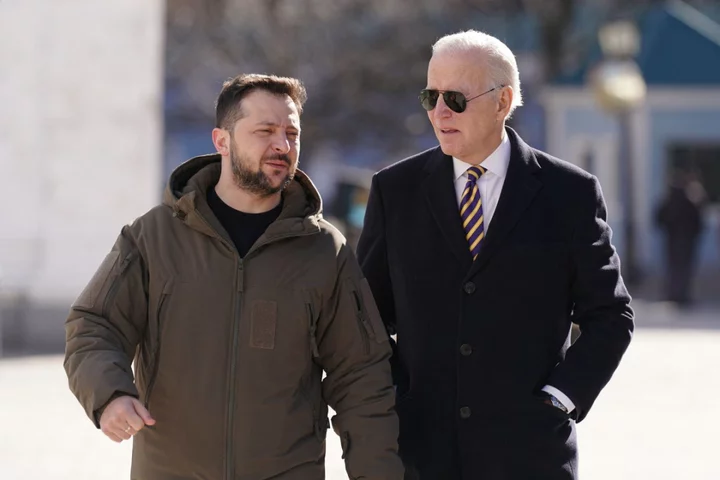
Volodymyr Zelensky set to meet Joe Biden in Washington in his second trip since war
Volodymyr Zelensky is likely going to meet Joe Biden at the White House and also visit Capitol Hill in a diplomatic trip to Washington next week, suggested several media reports. The Ukrainian president’s second visit to the US since Russia’s invasion comes at a time Congress is mulling Mr Biden’s request to assist Ukraine with as much as $24bn (£19bn) in military and humanitarian aid. The visit also comes when Western leaders have defended Ukraine’s counteroffensive against Russia, that officials under the condition of anonymity have said has been slow to take off. On Friday, Ukraine announced it had liberated a village near Bakhmut in a “lightning operation” after fierce fighting with Russian troops amid its counteroffensive. Mr Zelensky will meet the US president at the White House next Thursday, an administration official said on the condition of anonymity. Two congressional aides confirmed the war-time president’s trip to the Capitol. The two leaders could also attend a meeting of the UN General Assembly (UNGA) in New York to be held on 18-19 September. The White House National Security Council, however, has declined to comment on Mr Zelensky’s plans. That includes the likely meeting between the two presidents at the White House. This will be Mr Zelensky’s second visit to the US and also be only the second time he has ever visited any country abroad since the invasion in February last year. He had made a grand visit to the US in December last year and delivered an address to the US House of Representatives. In a bid to boost Ukraine’s military capabilities, Mr Biden sought a package of $13.1bn in additional military aid and another $8.5bn for humanitarian support, which also includes $2.3bn for financing and to catalyse donors through the World Bank. However, he is faced with pushback from conservative Republican lawmakers who have been calling for broad federal spending cuts and some of those allied with Donald Trump as they specifically look to stop money to Ukraine. The Congress is facing increasing strife over providing additional funding for Ukraine as the war is well into its second year and working to pass its annual appropriations bills before the 30 September deadline to keep the US government running. Mr Zelensky is likely slated to deliver a speech to the UNGA and also reportedly looking to hold meetings with other visiting world leaders. This has been claimed by Israeli prime minister Benjamin Netanyahu, who said he planned to meet Mr Zelensky on the sidelines of the UN meetings. Additionally, the US is looking to impose new sanctions on more than 150 individuals and entities related to Russia’s invasion of Ukraine. “The US was continuing our relentless work to target Russia’s military supply chains and deprive (Russian president Vladimir) Putin of the equipment, technology, and services he needs to wage his barbaric war on Ukraine,” Treasury Secretary Janet Yellen said. Read More Isolated Putin and Kim lay groundwork for second summit – as pair warned over ‘price to pay’ for cooperation Ukraine-Russia war – live: Kyiv is pushing ‘Putin forces back’ says UK as damage to Crimea fleet revealed Ukraine liberates village near Bakhmut amid Russian losses in east and south Ukraine ‘holds initiative’ in counteroffensive against Russia, says UK military chief Kim Jong Un stops to see a fighter jet factory as Russia and North Korea are warned off arms deals
2023-09-15 16:49

Truth behind ‘meteorite crater’ brings amateur astronomer down to Earth
A stargazer who thought he’d made the discovery of a lifetime was brought down to Earth with a bump when a crater apparently left by a meteorite was revealed to be nothing more than a hole dug by beach-goers. Astrophysics enthusiast Dave Kennedy was over the moon when the hole, several feet wide and deep, appeared in north Dublin. He felt sure that a small, black, heavy rock found at the bottom of the hole was an asteroid from outer space, and contacted various astronomy experts in an effort to confirm his theory. He said a scorch mark on one side of the rock showed the angle at which it had fallen. “Only a month ago, I was watching a documentary from Nasa on exactly what we’re looking at so when I looked at it and saw how uniform it is, and the vast crater, I knew immediately I was looking at an impact site,” he said. Visitors to the Portmarnock beach gathered to inspect the crater. One said: “We’re down here quite a lot and never seen anything like this before, so it’s pretty spectacular.” However, Mr Kennedy’s optimism was short-lived. Within a day of his appearance on Virgin Media News, a “context note” on X (formerly Twitter) compiled from user information read: “It is in fact not a cosmic event - instead it was dug out the day before by 2 lads with a beach spade.” Footage on social media posted by friends of the young men showed them sitting in the hole, digging it out with children’s spades, and was captioned: “The hole we dug on Saturday”. Although the astronomy enthusiast was widely mocked, he said he would still have the rock analysed in the hope it wasn’t a “completely fruitless discovery”, Virgin Media News reported. Research on the chances of asteroids hitting Earth has focused on much larger rocks. Astronomers say Earth probably will not be struck by an object 1km wide (0.6 miles) for at least 1,000 years – but they have not ruled out smaller meteorites landing before then. Read More 4.6 billion-year-old meteorite sheds light on early solar system – study Best beach stays in the UK and Ireland for a peaceful break in 2023 Ukraine war: Kyiv ‘is pushing Russia back’, UK’s most senior military officer says War-blinded Ukrainian soldier cries with joy at new love at his wedding Ukraine ‘holds initiative’ in counteroffensive against Russia, says UK military chief
2023-09-15 14:50
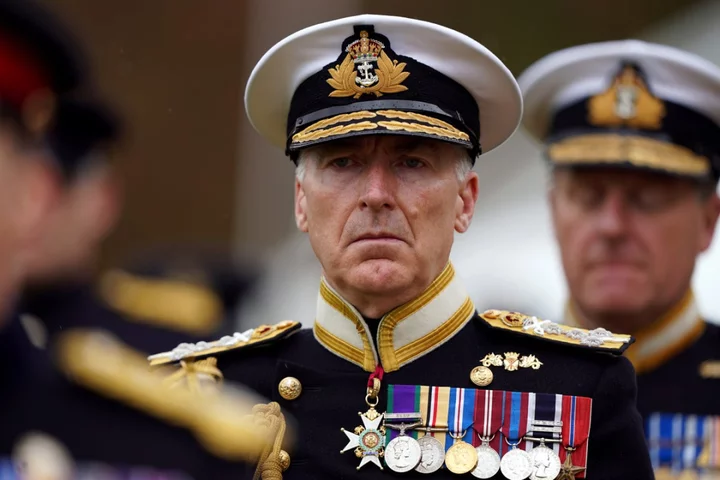
Ukraine ‘holds initiative’ in counteroffensive against Russia, says UK military chief
Britain’s military chief has defended Ukraine’s counteroffensive and said its troops “continue to hold the initiative” amid criticism that the pushback against the Russian invasion is moving slowly. The comments have also come as the war-hit nation’s deputy defence minister on Thursday said “good news” had emerged in the eastern front of the battlefield. “In the north, they are holding and fixing Russian forces there and in the south they are making progress between 10km and 20km, depending on how you judge it,” Sir Tony Radakin was quoted as saying by The Guardian at the DSEI arms fair in London. “The idea that war is neat and tidy, and you can plan and predict it to the nth degree is nonsense,” said Britain’s most senior military officer. He said progress of the counteroffensive could not be measured by a predictable timetable and warned the UK is vulnerable to a potential missile or drone attack as he pushed for a further discussion on improving homeland security. There is an “aggressive world out there in terms of state threats”, he said, pointing out it is now easy to “get close to a country and fly drones in”. British armed forces were “having a bigger conversation about homeland defences”, the chief of the defence staff said and asked whether within that “we need to have a conversation about integrated missile defence”. Admiral Radakin has been closely monitoring the war with communication lines to Ukraine’s most senior military commander Valerii Zaluzhnyi. The comments come a week after Nato secretary-general Jens Stoltenberg shot back at recent criticism of “slow” counteroffensive from Ukrainian troops as he pointed out the numbers of mines in the battlefield Ukraine is encountering are at a historic high. “The starting point is that the Russian army used to be the second strongest in the world. And now the Russian army is the second strongest in Ukraine. That’s quite impressive by Ukrainians,” he said. “No one ever said that this was going to be easy,” Mr Stoltenberg told lawmakers at the European parliament earlier this month. “Hardly any time in history we have seen more mines on the battlefield than we are seeing in Ukraine today. So it was obvious that this was going to be extremely difficult. “The Ukrainians are gradually gaining ground. They have been able to breach the defensive lines of the Russian forces, and they are moving forward,” he said. Ukrainian officials said the war being fought in the country is unlike any other, as its air space has not been shut down and it does not have top-tier warplanes like F-16s. Last month, several US and other Western officials suggested the grinding war’s counteroffensive stage was falling short of expectations – but did not choose to be quoted on their claims. Some officials pointed holes in Ukraine’s strategy and blamed it for concentrating its forces in the wrong places. The counteroffensive has been backed by billions of dollars’ worth of Western military equipment. Read More Just 14 UK tanks for Ukraine? We must do better than that Sunak says Russian leader ‘doesn’t want to be held accountable’ at G20 US sends Ukraine controversial depleted uranium weapons that can pierce tank armour Zelensky needed to sack his defence minister – but it goes beyond just corruption scandals From Challenger to Leopard: How Ukraine’s tanks compare to Russia’s
2023-09-15 13:59

Citing sustainability, Starbucks wants to overhaul its iconic cup. Will customers go along?
Bethany Patton steps up to the counter and places her pink mug into a shoebox-sized dishwasher. It spins. It whirs. Water splashes inside. After 90 seconds, the door opens and steam emerges. A barista grabs the mug, dries it and prepares Patton’s order — a 16-ounce Starbucks double espresso on ice. For bringing her own cup, Patton gets $1 off her drink. “Saving the environment is important and all, but I probably come here more in knowing that I’m going to get a dollar off,” says Patton, 27, a cancer researcher at Arizona State University. Two friends who came on the afternoon coffee run nod as they hold the cups that they, too, brought along. Just as noteworthy as what they're carrying is what they are not: the disposable Starbucks cup, an icon in a world where the word is overused. For a generation and more, it has been a cornerstone of consumer society, first in the United States and then globally — the throwaway cup with the emerald logo depicting a longhaired siren with locks like ocean waves. Ubiquitous to the point of being an accessory, it has carried a message: I am drinking the world's most recognizable coffee brand. Now, in an era where concern for sustainability can be good business, the Starbucks disposable cup may be on its way to extinction thanks to an unlikely force: Starbucks itself. CONVENIENCE COLLIDES WITH VIRTUE By 2030, Starbucks wants to move away completely from disposable cups, which represent big portions of the company’s overall waste and greenhouse gas emissions. The stated reason is that it's the right thing to do for the environment, and Starbucks has a history of lofty sustainability goals around various aspects of their global operations. Some have been met, such as new stores being certified for energy efficiency; others have been revised or scrapped entirely. For example, in 2008 the company said that by 2015 it wanted 100% of its cups to be recyclable or reusable. Today, that's still a long way away. Today's drive to overhaul the cup comes with an obvious business imperative. Producing disposable products like cups creates greenhouse gas emissions, which warm the planet and lead to extreme weather events and other manifestations of climate change. That goes against customers' increasing expectations for companies to be part of the solution to climate change. Still, while customers want companies to be environmentally conscious, that doesn’t mean they’re willing to give up convenience. And there's this: Could eliminating the millions of paper and plastic cups used each year hurt Starbucks? After all, those cups, in the hands of customers, are advertising — a market penetration that makes Starbucks feel ubiquitous. At the store where Patton gets her coffee, Starbucks already doesn't serve any in disposable paper or plastic cups. Customers who don’t bring their own are given a reusable plastic one that can be dropped off in bins around campus. It’s one of two dozen pilots over the last two years, aimed at changing how the world’s largest coffee maker serves its java. The goal: to cut the company's waste, water use and carbon emissions in half by 2030. Pulling that off will be tricky and fraught with risks. It provides a window into how companies go from ambitious sustainability targets to actual results. “Our vision for the cup of the future — and our Holy Grail, if you will — is that the cup still has the iconic symbol on it,” says Michael Kobori, head of sustainability at Starbucks. “It’s just as a reusable cup.” Starbucks sees the change as an opportunity to cast the siren, and the company, in a different light. It also wants to push more suppliers in its production chain to provide recycled material and partners, such as universities and other locales that house stores, to be able to handle all that comes with reusable cups. Erin Simon, vice president for plastic waste and business at World Wildlife Fund, says commitment from major companies can help. But ultimately, she says, major change can happen only with corporate collaboration — and government regulation. “Not one institution, not one organization, not even one sector can change it on its own," Simon says. At Starbucks, the changes will create ripple effects. Jon Solorzano, a Los Angeles lawyer who advises companies on developing climate-friendly operations and disclosures, (an area referred to as “environmental, social and governance”), says the company likely has hundreds of suppliers that help manufacture cups. “It’s kind of like turning an aircraft carrier around,” Solorzano says. “Little tiny tweaks, which seem insignificant, can actually have big operational challenges for an organization." Starbucks is not the first company to push toward a reusable cup. From large companies in Europe, such as RECUP in Germany, which uses reusable cups and other food packaging, to local coffee houses in cities like San Francisco, the goal for years has been to shed disposable paper and plastic. But as the largest coffee company in the world, with more than 37,000 stores in 86 countries and revenues of $32 billion last year, Starbucks could force change across the industry. At the same time, failure to adapt and lead could hurt the coffee giant in customers' eyes. “I’ll always choose the more sustainable company,” says Irene Linayao-Putman, a public health worker from San Diego who recently bought Starbucks while visiting Seattle. The road to overhauling the container transcends just making a different choice or spending money. Improving sustainability requires navigating a web of technological developments, seeking out like-minded suppliers and testing how far customers can be pushed to change. For Starbucks, it means doing two major things in parallel that seemingly conflict: Move toward only reusable cups while developing disposable cups that use less material and are more recyclable. And managing the optics along the way. “They are just trying to get more buyers,” 10-year-old Aria June said with a laugh after buying Starbucks in Seattle. Then, prodded by her father, she added that sustainability and getting more business could co-exist. THE MECHANICS OF REUSE At the Arizona State store, if customers don’t bring their own cup, they are given a reusable plastic one with a Starbucks logo. If they bring it back, they get $1 off, just like customers who bring their own. And if they don't want to hold onto it? There are bins around campus, and the cups are washed by the university — part of a partnership with Starbucks — and returned to the store. Cups too damaged to be reused, along with disposable Starbucks cold drink cups and other plastic found in the trash, are sent to the university’s Circular Living Lab. They're shredded, melted and extruded into long, lumber-like pieces. Those pieces are cut, sanded and built into boxes, which become the return bins for the reusable cups. “This obviously has some energy and production costs, but using recycled content is always going to be less energy intensive (and) emit less CO2 than using virgin plastics,” says Tyler Eglen, the lab's project manager. For several years, Starbucks has been increasing the amount of recycled material in disposable paper cups. In some markets last year, Starbucks began using single-use paper cups made with 30% recycled material, an increase from 10%. The plan is to have all cups at 30% recycled material in in all U.S. stores starting in early 2025. That pushes the limits of what can be done with recycled paper material that holds hot liquids. Paper pulp from recycled cups has shorter fibers than virgin pulp, which means less rigidity, important particularly with hot coffee. How much recycled material can be used in manufacturing new cups depends on how equipped any particular area is to gather material and recycle it. Big cities have major recycling infrastructure, but many communities around the world have little to no recycling capacity. Another barrier: the lining inside the cup, crucial to keeping a hot liquid from quickly breaking down the paper. Made of polyethylene, a heat-resistant plastic, the liner is about 5% of the total cup but a significant piece of its overall carbon footprint. There is also the plastic lid. “Today, the reality is that for protection, as we put a hot beverage inside, we need a good seal on those cups," says Jane Tsilas, Starbucks’ senior manager for packaging. A similar testing and refining process is happening with disposable cold-drink cups. At the Tryer Center innovation lab in Starbucks' Seattle headquarters, drinks with ice in plastic cups are placed in holders attached to a platform. It then shakes as technicians look for leaks and flaws. For the last several years, Starbucks has been testing different kinds of plastics. In 2019, the company went to a strawless lid, eliminating a good amount of plastic. By the end of 2023, the goal is to reduce by 15% the amount of material in each cup. To do that, technicians examine different parts of the cup to see where less material may be used without weakening it. For example, could reducing the thickness where many people hold the cup, about halfway between the middle and lid, mean the cup collapses and the drink spills on the customer? "If it passes tests with baristas, then we would put it in the stores,” says Kyle Walker, a packaging engineer on Starbucks' research and development team. NOT AS EASY AS IT MIGHT SEEM Eventually, the endpoint is this outcome, which is more sustainable and good PR, too: No more disposables at Starbucks. That's because no matter the tests or technological innovations, there are limits to how much waste can be reduced with disposable paper and plastic cups. Long-term reductions in waste will come from reusable cups. The company has a long way to go. Since the reintroduction of reusable cups in some stores in July 2021 — reusable cups were not used during much of the COVID-19 pandemic — only 1.2% of worldwide sales in fiscal year 2022 came from reusables. Starbucks refused to provide data on how many disposable cups it uses in any given year. For all the talk of sustainability and increasing consciousness about climate change, it’s fair to assume that a significant number of Starbucks’ disposables end up in landfills. Even in Seattle, a progressive city with good recycling infrastructure, there are many cups in garbage cans outside Starbucks stores. Valencia Villanueva, a barista at the Arizona State store, has noted a growing consciousness among customers about the cup-washing machine and the “borrowed” cup program. That gives her confidence that the future is reusable cups. After all, it's not as if anyone is clamoring to be wasteful — even if what they're giving up is an item that became something of a global status symbol. “Nobody," she says, “has complained and said they wanted a single-use cup.” ___ Peter Prengaman is news director of The Associated Press' climate and environment team and can be followed here. Video journalist Manuel Valdes in Seattle contributed to this report. ___ AP climate and environmental coverage receives support from several private foundations. See more about AP’s climate initiative here. The AP is solely responsible for all content. Read More Ukraine war’s heaviest fight rages in east - follow live Charity boss speaks out over ‘traumatic’ encounter with royal aide Citing sustainability, Starbucks wants to overhaul its iconic cup. Will customers go along? From piñata to postage stamp, US celebrates centuries-old Hispanic tradition Starbucks cheers ‘good progress’ in plan for 100 new UK shops
2023-09-15 13:59
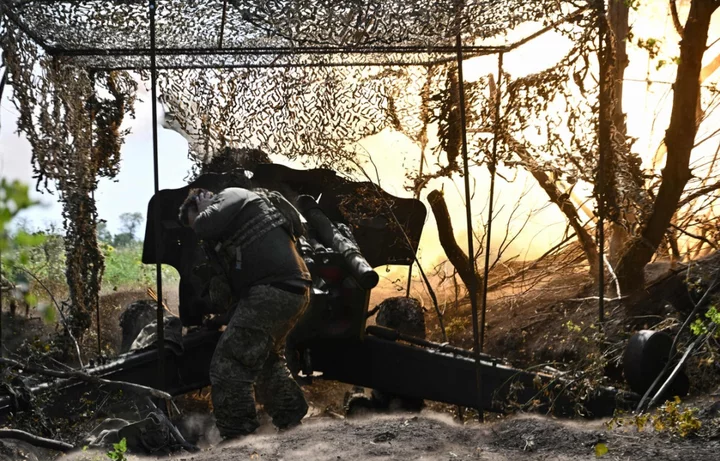
Ukraine closes in on village near Bakhmut amid Russian losses in east and south
Ukraine’s military has “good news” in the eastern front of the battlefield where heavy fighting is underway to regain ground, deputy defence minister Hanna Maliar has said, saying Kyiv’s forces were making gains near Bakhmut. “We are moving forward in the Bakhmut direction. The main battles continue in the districts of Andriivka, Kurdyumivka, Klishchiivka. And we have good news there – Andriivka. The situation is very complex and changeable, we keep our fingers crossed,” the deputy defence minister said in her official Telegram channel on Thursday evening. Initially, the minister claimed Ukrainian forces had retaken Andriivka village, which falls south of Bakhmut, but the country’s Third Assault Brigade fighting in the region said the report was “premature”. “Currently, serious and heavy fighting continues in the districts of Klishchiivka and Andriivka,” the brigade from Ukraine’s ground forces handling military operations on the eastern front said. Ms Maliar also said Vladimir Putin’s troops had sustained “significant losses” in attacks on key towns as Ukrainian forces are bolstering their efforts to capture clusters of villages in a drive towards the Sea of Azov. The Russian casualties had “significantly reduced their ability to defend themselves”, she said. Senior military officials said heavy casualties have been inflicted on Russian forces on the southern front, with over 600 deaths of Russian soldiers. “The enemy, as a result of attempts to recapture at least some of the lost positions in the Tavria (south) direction in the last two days has lost 15 tanks and 12 armoured vehicles,” Oleksander Shtupun, spokesperson for troops on the southern front, said on national television. Russian personnel losses stand at 665 over two days, he said. As part of a critical component of Ukraine’s four-month-old counteroffensive, the country’s forces are pushing southward with the aim to split a land bridge created by Russian forces between the Crimean peninsula and the areas Ukraine holds in the east. Russia’s defence ministry claimed its forces repelled eight attacks in the east in the hotly contested areas south of Bakhmut. Ukraine’s military confirmed attacks on two Russian patrol ships early on Thursday and said it destroyed a sophisticated air defence system in the west of occupied Crimea. President Volodymyr Zelensky marked a direct and rare celebration of the attacks on the Russian navy in his nightly address. “The entire staff of the Security Service of Ukraine and our Navy should be specially commended for this. I thank you for today’s triumph – the destruction of the occupiers’ air defence system on the land of our Crimea. It is a very significant achievement, well done! Glory to all who fight for Ukraine! And thank you to everyone who helps!” he said in his nightly address. The war-hit nation has been pushing back in the southern region and making increasing missile hits on the Crimean peninsula this week to challenge Mr Putin’s control in the Black Sea region. On Wednesday, Kyiv said it seriously damaged a Russian submarine and landing ship undergoing repairs in a missile strike on a shipyard in the Crimean port of Sevastopol, home to the Russian Black Sea Fleet. Read More Zelenskyy is expected to visit Capitol Hill as Congress is debating $21 billion in aid for Ukraine Ukraine-Russia war – live: Kyiv is pushing Putin forces back, UK’s most senior military officer says With Russia isolated on the world stage, Putin turns to old friend North Korea for help Kim Jong-un tests out Putin’s limousine during historic meeting Why support for Ukraine is in danger of splitting the EU
2023-09-15 12:56
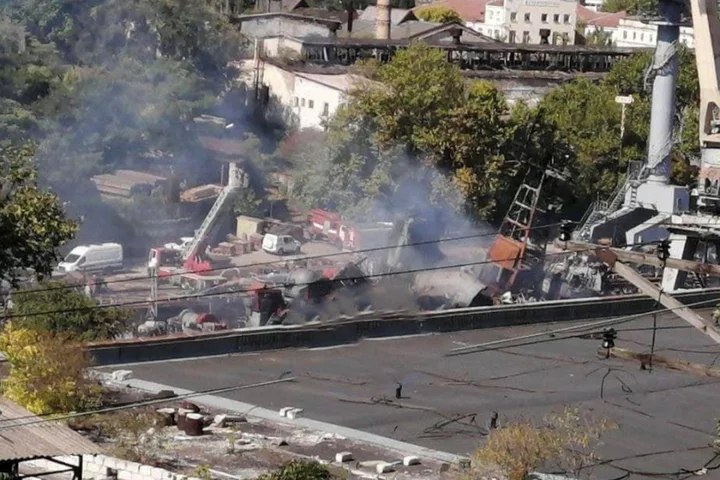
Ukraine-Russia war – live: Kyiv is pushing Putin forces back, UK’s most senior military officer says
Ukraine has the initiative in the war against Vladimir Putin and is pushing Russia back, according to Britain’s most senior military officer. Speaking at an arms fair in London. Sir Tony Radakin hit back at the idea Kyiv’s counteroffensive was struggling. “In the north they are holding and fixing Russian forces there and in the south they are making progress between 10 and 20km,” the Guardian reported him saying. His comments came as Ukraine president Volodymyr Zelensky hailed in his nightly address what he described as Ukraine‘s destruction of a Russian air defence system in the annexed Crimea peninsula “I thank you for today’s triumph,” he said, a reference to Russia’s “Triumf” air defence system. “The invaders’ air defence system was destroyed. Very significant, well done.” Ukraine has said it also attacked two Russian patrol ships on Thursday, ramping up its strikes to challenge Moscow’s dominance in the Black Sea region. The Ukrainian military, in a post on Telegram messenger, said it hit two Russian patrol boats in the southwest of the Black Sea, causing “certain damage” in the attack. Read More Kim Jong Un stops to see a fighter jet factory as Russia and North Korea are warned off arms deals She danced with Putin at her wedding. Now the former Austrian foreign minister has moved to Russia What is a Storm Shadow cruise missile?
2023-09-15 12:17
